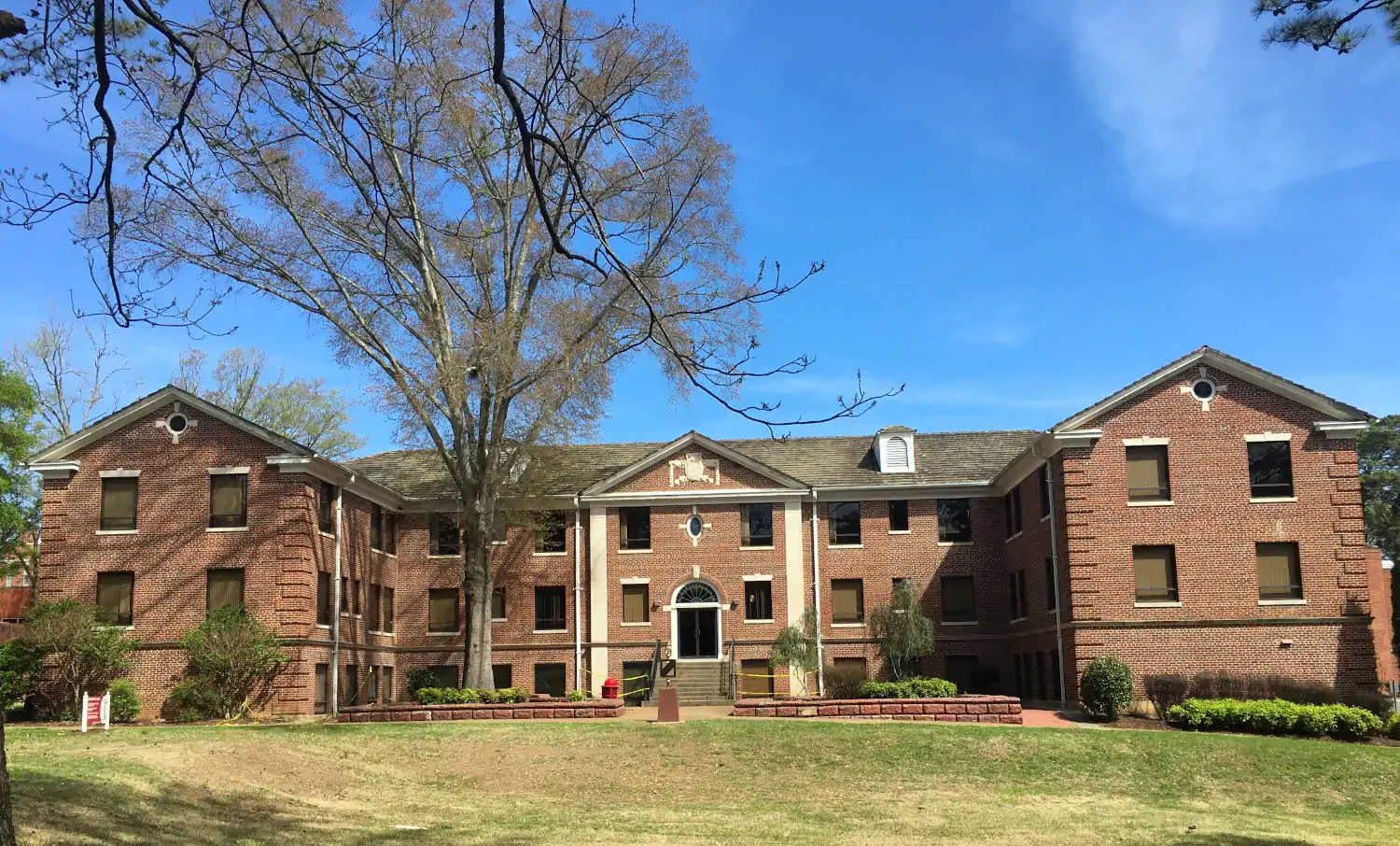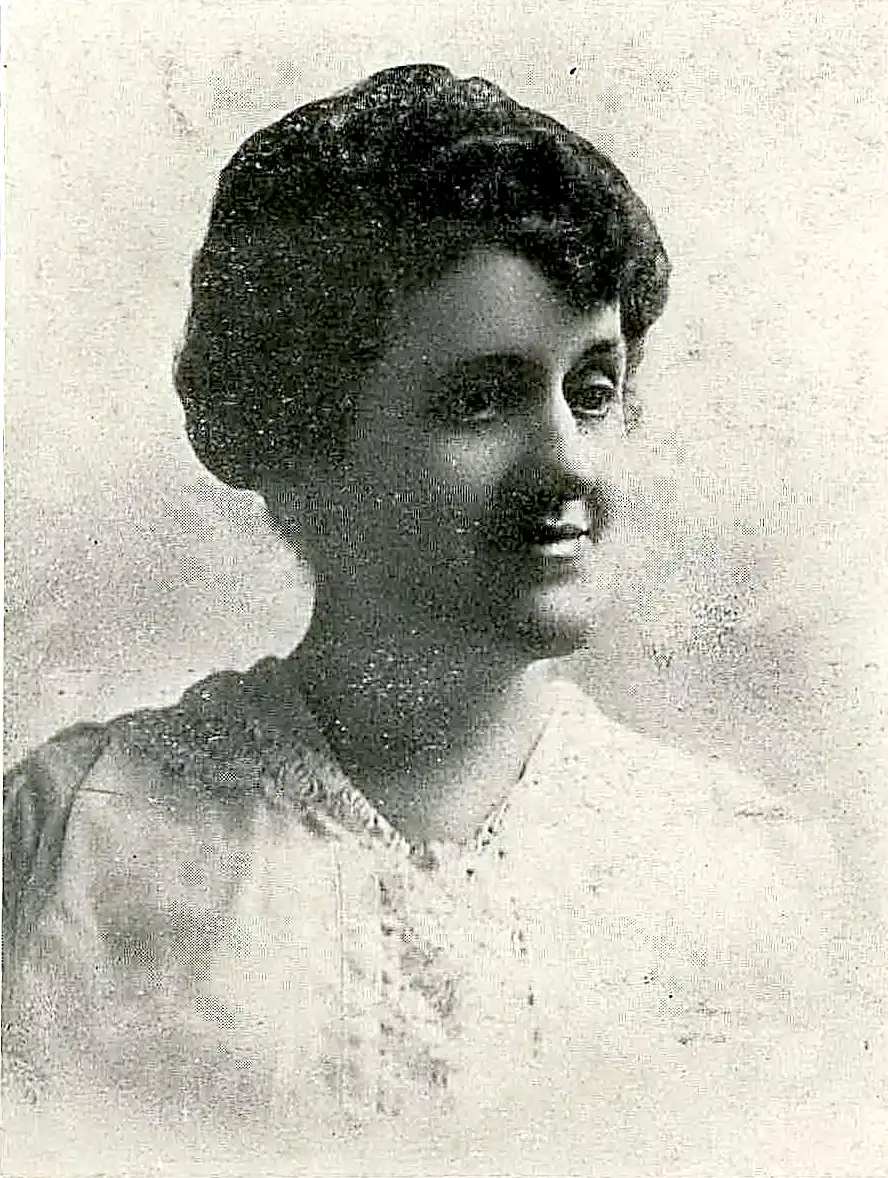Mooney Hall

Namesake
Dates
- Built: 1933
- Named: 11/10/1933
Map
History
With the construction of a dormitory for women in 1933, the College initiated a building program financed largely by various agencies of the Federal Government. Upon approval in 1933 by the Reconstruction Finance Corporation of a loan for $63,000, Henderson awarded the contract to the R. T. Higgins Company of Hot Springs. Located directly east of the building for the Dining Hall and Kitchen, the three-story dark red brick structure housed a kitchen, a dining room, and commons on the first floor and 36 bedrooms on the second and third floors to accommodate 72 women. Fireproof throughout, the dormitory was "a notable addition to the physical plant". It had a "graceful dignity that will be praised by many future generations”. The new dormitory was named the Mary Sue Mooney Hall in honor of a teacher of mathematics and English, who had been at the institution for 21 years.
At 10:30 a.m. on November 30, 1933, Thanksgiving Day and Homecoming, the College dedicated the Mary Sue Mooney Hall two weeks before its completion. For the dedication of this first building of the State years, President Womack set a pattern for this ceremony and future dedications by involving both alumni and current students. He designated the Alumni Association, assisted by the administration and the Homecoming Committee, to arrange the program presented in the Auditorium.
Alumni and current students presented the rather elaborate program. Under the direction of Taylor J. Ashford and sporting new uniforms, the H.S.T.C. Band played an overture, “Poet and Peasant” by Franz von Suppé. Dr. Matt L. Ellis, Class of 1921, gave the invocation; Miss Kristin Dildy, Class of 1932, sang a solo, “I Will Extol Thee” by Michael Costa.
Delivering the principal address, Robert Freeman Smith, Class of 1919 and Assistant Attorney General of Arkansas, said that "it pays to remember not only the services which we have received and the kindness of our former associates, but also it pays to remember the lasting truths and paths blazed by preceding generations." He warned against the "indiscriminate junking of ideals and conventions merely because they are old." Smith then paid tribute to Miss Mooney and her service to the College. "No more fitting name could have been chosen for the first new building since the College became a State institution," he concluded.
Also bringing greetings to the alumni and guests were Guy Robbins, Class of 1933, who spoke on behalf of the Henderson State Alumni Association, and Thurman May, president of the Senior Class, 1934, who spoke on behalf of the student body. To conclude the program Ernest Jones, Class of 1931, rendered a vocal solo, "If With All Your Hearts" by Mendelssohn; and the Henderson Choral Society, under the direction of Miss Lelia Wheeler, sang "The Heavens Are Telling" by Haydn. The program of dedication had formally opened a new era in the growth of the College.
Following the formal dedication, the informal dedicatory ceremonies of Mooney Hall occurred on December 15-16, 1933, when the girls moved into the building. Officially scheduled for their move to the “splendid new dormitory” on Saturday, December 16, the eager girls began moving on Friday by "dragging odd and sundry loads of personal baggage out of the castle on third [floor],” which had housed Henderson coeds since 1915. For each armload of belongings, they trekked from their rooms down the halls of the old dormitory, down the long flight of stairs to the main corridor of College Hall, down the long steps to the sidewalk, and then through rain, water, and mud until they reached still more steps at Mooney Hall.
On Saturday morning, an intermittent drizzle "that would even daunt a duck" was falling and had made the "newly built-up earth surrounding" Mooney Hall a veritable mound of mud. "Not to be stopped by the adversities of nature," the girls and "the boys who were luckless enough to be caught" continued the "great exodus to Mooney Hall." Strange sights appeared in the exodus. Students saw dresses, trunks, and wardrobes glide across the campus "with only two pairs of human legs visible as motive power." Here and there, "one might see a softie carrying nothing but a mattress and springs; but these were rare." What no one did see was a "number of prominent Henderson sheiks who ordinarily make much of an opportunity to hang around the girls."
Finally, the movers had transported all the personal property of the new residents to Mooney Hall. Despite the rain and the mud, all had had a "large time." And it was "a safe bet that all of them will tell their grandchildren about the day of the big move".
For Mooney Hall, one other formal ceremony remained. On October 16, 1934, a portrait of Mary Sue Mooney painted by Dr. Roy Cleveland Phillips was officially unveiled in the College Auditorium. Dr. Phillips was professor of foreign languages. Three former students and now faculty members at H.S.T.C. were on the program. Dr. Matt Ellis presided and opened the program with the statement, “We are honored to honor Miss Mooney.” Miss Ellen Boulware Martin, English teacher, spoke in appreciation of Miss Mooney as teacher and friend. As Professor P. W. Turrentine, Head of the English Department, unveiled the portrait, Miss Mooney stood beside it, "dressed identically" as she appeared in the painting that is 30 inches by 40 inches. The large audience responded with a “great burst of applause and a standing ovation.” Miss Mooney then paid tribute to "the artist, who had painted her likeness so well." President Womack made the acceptance speech for Henderson. Dr. S.C.E. Powers paid the official tribute to the artist, Dr. Phillips, for his generosity and talent.
Residents of Mooney Hall had contributed to a fund to have the portrait framed in three-inch gold-leaf molding to keep the portrait on display in the Mooney Hall lounge on the second floor. After Mooney Hall ceased to be used as a dormitory for girls and was converted to an office and classroom building in the 1970s, the portrait was hung in the foyer of the second floor; it was still there in 2025.
In 1934, the College moved the dining hall and kitchen to the first floor of Mooney Hall, and designated the former building housing the dining hall and kitchen as new space for the Library. After the cafeteria was moved from the first floor of Mooney Hall to the Caddo Center in 1949, the College remodeled the first floor “into appropriate rooms for 44 more girls”. In 1974, the College once more renovated and equipped Mooney Hall at a cost of $1,057,699. The building became the center for the School of Business on the second and third levels that included classrooms, seminar and conference rooms, the Educational Economic Center, and faculty offices. On the ground level, Mooney housed the Health Center, the Duplicating Center, and Media Laboratory and Services, including a photographic darkroom. In the rotunda added to the north wall, Mooney Hall provided an elevator and lounge areas. Except for the rotunda, Mooney Hall still presents the same exterior appearance as the former dormitory. As of 2025, it continues to house the Health Center.
In Janurary, 2022, the University Police Station moved to Mooney Hall. The building received a complete rennovation in 2025, thanks to an historic preservation grant. Highlights include a new roof and bright copper rain gutters.
